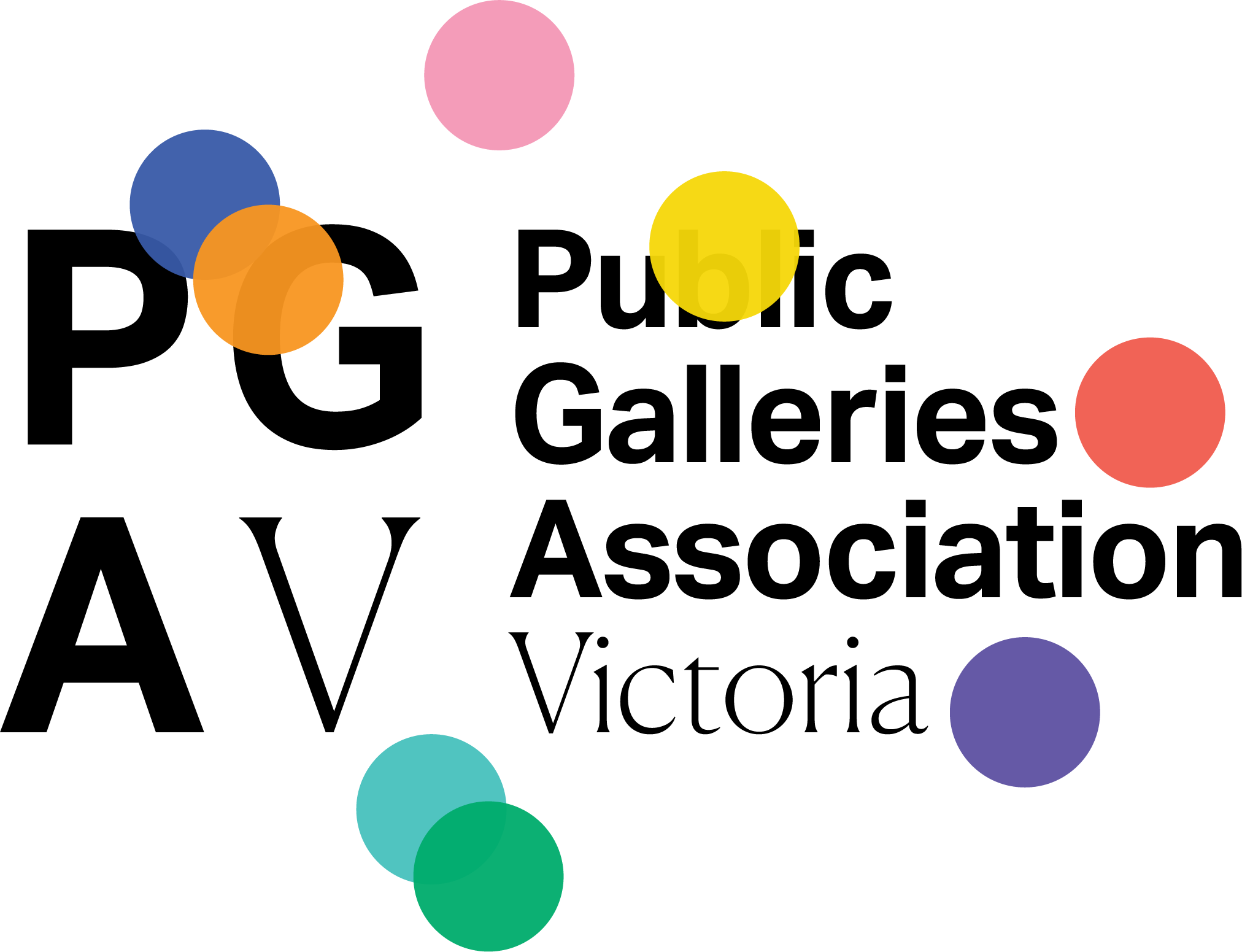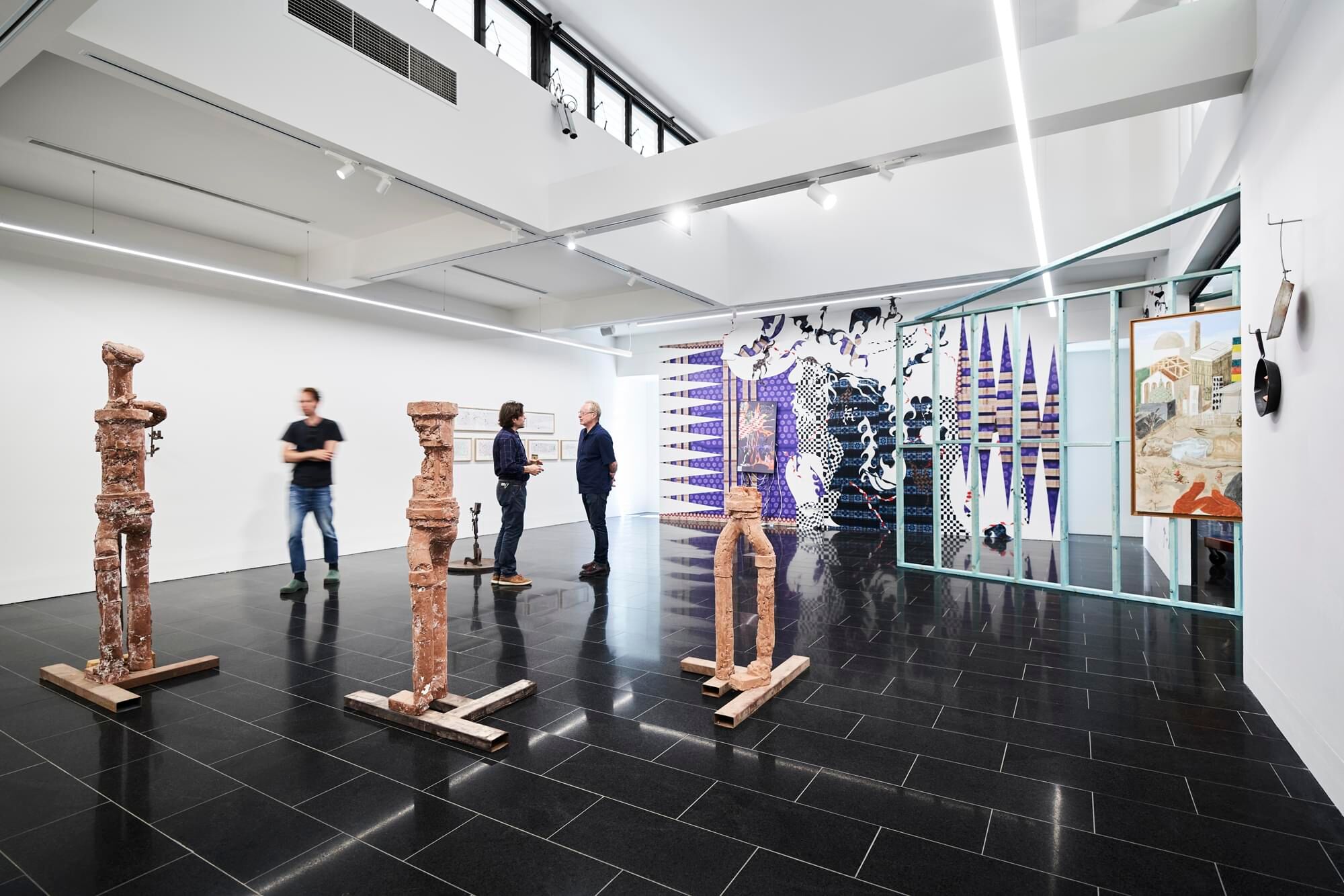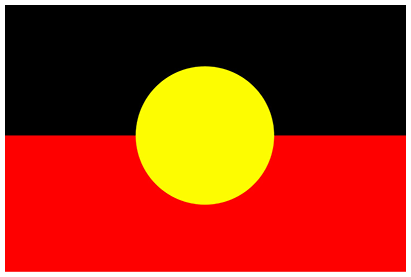La Trobe Art Institute is a contemporary art centre like no other in regional Victoria. Located on Dja Dja Wurrung Country in the heart of Bendigo’s arts precinct, we present 4 curated exhibitions, biannual façade commissions, continuous public programs and 6 seasons of artist and curator residencies each year.
With resources including a gallery devoted to contemporary art exhibitions, apartment, studio, 90-seat auditorium and hireable spaces, we offer stimulating social spaces for our communities.
- Our programs support artists and curators to experiment and engage with audiences in new ways.
- Our public programs surprise, enrich and challenge the conversation.
- Short courses and education programs provide lifelong learning opportunities.
La Trobe Art Institute is the custodian of La Trobe University’s 7 art collections. We offer curatorial expertise, mediation and interpretation of art and culture across 6 Victorian campuses and their wider communities.
Permanent Collection
Steps were taken to establish La Trobe University Art Collection even before the Melbourne Campus opened in 1967. Architect Roy Simpson AO incorporated the display of artworks into his vision for the new university.
Today, La Trobe Art Institute is the custodian of 7 art collections, comprising about 10,500 artworks.
- AD Trendall Collection
- Ethnographic Collection
- FM Courtis Collection
- Geoff Raby Collection of Chinese Art
- Larundel Collection
- La Trobe University Art Collection (including Sculpture Park and Etta Hirsh Ceramics Collection)
- Stewart E Fraser Collection
We welcome your enquiries, advice and information about artworks held in La Trobe art collections. Contact artcollections@latrobe.edu.au.
Online collection
Through collaboration and consultation with our communities, La Trobe Art Institute is exploring innovative ways to provide access to objects for exhibition, display, teaching, learning and research.
By the middle of this year, we will provide online access to the FM Courtis Collection and the Geoff Raby Collection of Chinese Art. We will add the La Trobe University Art Collection by the end of 2024. In the meantime, you can learn more about the collections at our website.
We welcome your enquiries, advice and information about artworks held in La Trobe art collections. Contact artcollections@latrobe.edu.au.
getting to the gallery
Bendigo is approximately 150 km north-west of Melbourne and can be reached by car or V/Line train. We’re situated in the heart of Bendigo’s arts precinct, opposite Bendigo Art Gallery in historic View Street, a short walk from a wealth of cafés, independent shops, parks and attractions.
Public transport
The Melbourne to Bendigo V/Line train service takes about 2 hours. You can use a myki and the daily fare is capped at $10 or $5 concession.
- Train timetables and fares are available at Public Transport Victoria.
- La Trobe Art Institute is a 20-minute walk from the station via Mitchell and View streets.
- The nearest bus stop is at the corner of Rowan and View streets. Catch bus 50, 52, 53, 54, 55 or 63 from outside Bendigo Railway Station.
Travelling by car
Travelling by car from Melbourne to Bendigo takes about 2 hours via the Calder Freeway (M79). From Castlemaine, the trip takes about 30 minutes, and from Kyneton, about 1 hour.
- Off-street (ticketed) car parking is available at the Rosalind Park carpark, behind The Capital. Enter via the roundabout at the intersection of View and Rowan streets. You can purchase a ticket at the available machines or use the PayStay app.
- Short-term on-street carparks are available along View, Rowan and Mackenzie streets. These fill up quickly, especially on busy days.
accessibility
There is disabled car parking available across View Street in front of The Capital and Bendigo Trades Hall. The pedestrian crossing in front of Bendigo Art Gallery is the smoothest route for crossing the street in a wheelchair.
Our building is wheelchair and pram accessible via a ramp entry adjacent to the main entrance. Our galleries and bathrooms are also accessible.
- Assistance and guide dogs are welcome.
- Baby change facilities are available.
- Gender-neutral toilets are available.
Some exhibitions have sound and lights that may have unwelcome effects on people with noise and light sensitivity. Please contact us if you wish to know more before your visit.
Cover image: Jeremy Eaton and Nicholas Smith, Dressings, 2024, La Trobe Art Institute Biannual Façade Commission. Courtesy the artists, LON Gallery and Haydens. Photo: Leon Schoots.
Above image: Works by Sven ’t Jolle (foreground), Geoff Lowe (middle ground) and Fyerool Darma (background), Collecting debt and other bad moods, La Trobe Art Institute, 2023. Photo: Leon Schoots.








